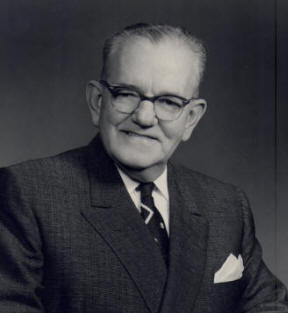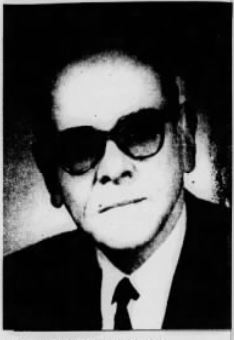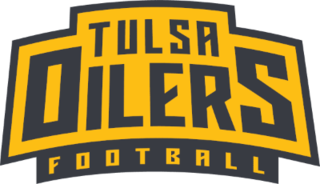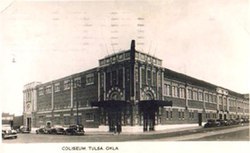
Climate Pledge Arena is a multi-purpose indoor arena in Seattle, Washington, United States. It is located north of Downtown Seattle in the 74-acre (30 ha) entertainment complex known as Seattle Center, the site of the 1962 World's Fair, for which it was originally developed. After opening in 1962, it was subsequently bought and converted by the city of Seattle for entertainment purposes. From 2018 to 2021, the arena underwent a $1.15 billion redevelopment; the renovation preserved the original exterior and roof, which was declared a Seattle Landmark in 2017 and was listed on the Washington Heritage Register as well as the National Register of Historic Places in 2018. The renovated venue has a capacity of 17,151 for ice hockey and 18,300 for basketball.

Northlands Coliseum is a defunct indoor arena in Edmonton, Alberta, on the north side of Northlands. It was used for sports events and concerts, and was home to the Edmonton Oilers of the World Hockey Association (WHA) and National Hockey League (NHL), and the Edmonton Oil Kings of the Western Hockey League (WHL). The arena opened in 1974, and was later known as Edmonton Coliseum, Skyreach Centre, and Rexall Place, before returning to the Northlands Coliseum name in summer 2016.

Chicago Coliseum was the name applied to three large indoor arenas, which stood at various times in Chicago, Illinois, from the 1860s to 1982. They served as venues for large national conventions, exhibition halls, sports events, and entertainment.

Omni Coliseum was an indoor arena in Atlanta, Georgia, United States. Completed in 1972, the arena seated 16,378 for basketball and 15,278 for hockey. It was part of the Omni Complex, now known as the CNN Center.

Coca-Cola Coliseum is an arena at Exhibition Place in Toronto, Ontario, Canada, used for agricultural displays, ice hockey, and trade shows. It was built for the Canadian National Exhibition (CNE) and the Royal Agricultural Winter Fair in 1921. Since 1997 it has been part of the Enercare Centre exhibition complex. It serves as the home arena of the Toronto Marlies ice hockey team, the American Hockey League farm team of the Toronto Maple Leafs. For the 2015 Pan American Games the venue hosted the gymnastics competitions and was known as the Toronto Coliseum.

The Tulsa Oilers are a professional ice hockey team based in Tulsa, Oklahoma, and play in the ECHL. The Oilers played their home games at the Tulsa Convention Center until 2008 when they moved into the new BOK Center. For many years, the Tulsa Oilers name was shared with Tulsa's former minor-league baseball team that pre-dated the Tulsa Drillers. To reduce confusion in local news reporting, the hockey team was often called the "Ice Oilers".

Arizona Veterans Memorial Coliseum is a 14,870-seat multi-purpose indoor arena in Phoenix, Arizona, United States, located at the Arizona State Fairgrounds. It hosted the Phoenix Suns of the National Basketball Association from 1968 to 1992, as well as indoor soccer, roller derby and major and minor league ice hockey teams.

The Cox Business Convention Center is a 275,000 square foot convention center located in downtown Tulsa, Oklahoma.

The Jacksonville Veterans Memorial Coliseum was a multi-purpose arena located in Jacksonville, Florida. Built in 1960 and known as "northern Florida's most historic concert venue", it was home to most of the city's indoor professional sports teams and it hosted various concerts, circuses, and other events. It was demolished in 2003 and replaced with the VyStar Veterans Memorial Arena.

The Uline Arena, later renamed the Washington Coliseum, was an indoor arena in Washington, D.C. located at 1132, 1140, and 1146 3rd Street, Northeast, Washington, D.C. It was the site of one of President Dwight D. Eisenhower's inaugural balls in 1953, the first concert by The Beatles in the United States in 1964, and several other memorable moments in sports, show business, politics and in the civil rights movement of the 1960s. It had a capacity of over 8,000 people and was a major event space in Washington until the early 1970s.
KAKC is a commercial AM radio station in Tulsa, Oklahoma. The station airs a conservative talk radio format and is owned by iHeartMedia, Inc. The studios are on South Yale Avenue at the Tulsa Event Center in Southeast Tulsa.
The Forum is an indoor arena in Vancouver, British Columbia, Canada located on the grounds of the Pacific National Exhibition.
The American Hockey Association (AHA) was a minor professional hockey league that operated between 1926 and 1942. It had previously operated as the Central Hockey League, and before that as part of the United States Amateur Hockey Association. The AHA was the first professional hockey league to field teams in the Southern United States. The founding president was Alvin Warren, who also owned the St. Paul Saints.

Leroy Michael McGuirk was an American amateur and professional wrestler, and wrestling promoter. He was involved in professional wrestling for more than fifty years. As one of the longest surviving members of the National Wrestling Alliance (NWA), he was affiliated with the promotion from 1949 to 1982, where he was a one-time NWA World Junior Heavyweight Champion.

Sam Avey was an American businessman and sports promoter. Best known as the wrestling promoter of little big men, he is also credited for helping to create the Tulsa wrestling territory later used by the National Wrestling Alliance.

The Schenley Park Casino was Pittsburgh’s first multi-purpose arena. The facility was considered the envy of the sports and entertainment world during the early 1890s, with amenities that were unsurpassed anywhere on the globe. It was built at the entrance to Schenley Park in Oakland near the Phipps Conservatory, the Schenley Bridge and the Carnegie Library of Pittsburgh. The University of Pittsburgh’s Frick Fine Arts Building currently sits on the site of the casino. The casino was the first place in Pittsburgh where organized ice hockey was played. The arena's artificial ice surface was the first of its kind in North America.
Tulsa Promenade Mall was a 926,426-square-foot (86,067.8 m2) shopping center located in the Midtown section of Tulsa, Oklahoma. At the time of its closing, it was anchored by Dillard's, Extra Space Storage, Genesis Health Clubs, TruHealth Integrated Care CREOKS, and WeStreet Ice Center. The Tulsa Promenade sat on 22 acres of land and ceased operations on September 17, 2023.
The following is a timeline of the history of the city of Tulsa, Oklahoma, United States.

Leon Bishop Senter was an American architect who worked primarily in Oklahoma. Although not formally educated in architecture, he became Oklahoma's first licensed architect in 1925 and designed several buildings on the National Register of Historic Places.

The Tulsa Oilers are a professional indoor football team based in Tulsa, Oklahoma. A member of the Indoor Football League (IFL), the Oilers began play in 2023 at the BOK Center. The Oilers are owned by Andy Scurto, owner of the ECHL hockey franchise of the same name.
















